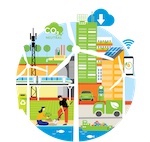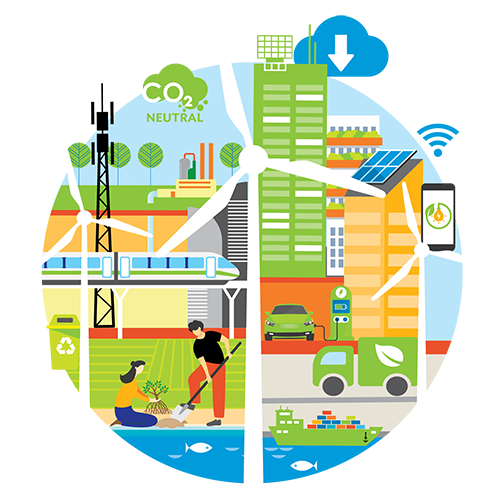Greener trade and investment is crucial to tackling climate change in Asia and the Pacific and will require governments in the region to work together more closely, according to a new report by the Asian Development Bank (ADB).
While trade and investment have fueled remarkable economic growth in Asia in recent decades, it has also led to large increases in carbon dioxide emissions in the region—which is more vulnerable to the effects of climate change than any other. Reversing this trend will require measures such as promoting trade in environmental goods and services, nurturing green businesses, developing carbon pricing mechanisms, and strengthening regional cooperation through trade and investment agreements, according to ADB's recently released Asian Economic Integration Report (AEIR) 2023.
Environmental cost of growth
“Asia and the Pacific’s remarkable growth has lifted millions of people out of poverty, but this has come at an environmental cost,” said ADB Chief Economist Albert Park. “The region now finds itself on the frontline of the climate crisis, which can derail development progress. Trade and investment remain as one of the most important drivers for growth and poverty reduction, but governments in the region need to intensify their cooperation to make trade and investment greener.”
Asia’s production-related carbon dioxide emissions almost tripled between 1995 and 2019, largely reflecting the region’s unparalleled pace of economic growth and industrialization to satisfy demand—both within the region and in export markets. Asia and the Pacific is now warming faster than any part of the world. Almost 40% of the world’s disasters occur in the region, and more than 70% of people affected by disasters live in Asia and the Pacific. Disasters disproportionately affect women and vulnerable populations.
According to the report, governments in the region can make trade and investment more sustainable and greener by:
- promoting the trade of environmental goods, such as solar panels, and services;
- nurturing green businesses through regulations, incentives, standards, and certification systems;
- enhancing international regulatory cooperation to make climate commitments and actions transparent, firm, interoperable, and collaborative; and
- developing carbon pricing mechanisms at both national and cross-border levels, through linkages and regional alliances.
AEIR reviews Asia and the Pacific’s progress on regional cooperation and integration and the states of trade, cross-border investment, financial integration, and the movement of people. According to the 2023 report, integration in the region is progressing steadily and remained stable in 2020 despite the COVID-19 pandemic. Trade growth, meanwhile, moderated in 2022 following a strong rebound in 2021.
ADB is committed to achieving a prosperous, inclusive, resilient, and sustainable Asia and the Pacific, while sustaining its efforts to eradicate extreme poverty. Established in 1966, it is owned by 68 members—49 from the region.
This article was first published by ADB on 7 February 2023.
 #SEADS2023 on 30 March will explore innovative technologies and solutions, financing mechanisms, and policies that can help Southeast Asia meet its net-zero goals. Join the discussion. Learn, share, collaborate. Register.
#SEADS2023 on 30 March will explore innovative technologies and solutions, financing mechanisms, and policies that can help Southeast Asia meet its net-zero goals. Join the discussion. Learn, share, collaborate. Register.

